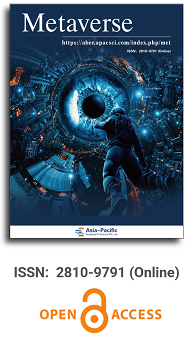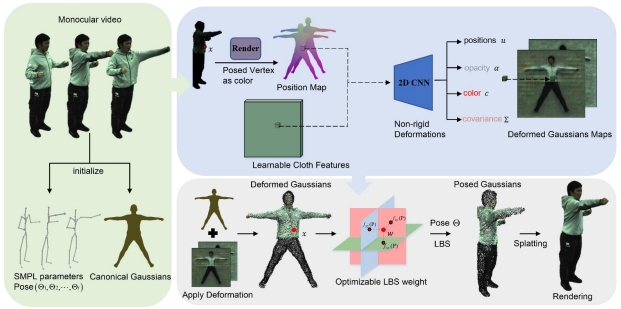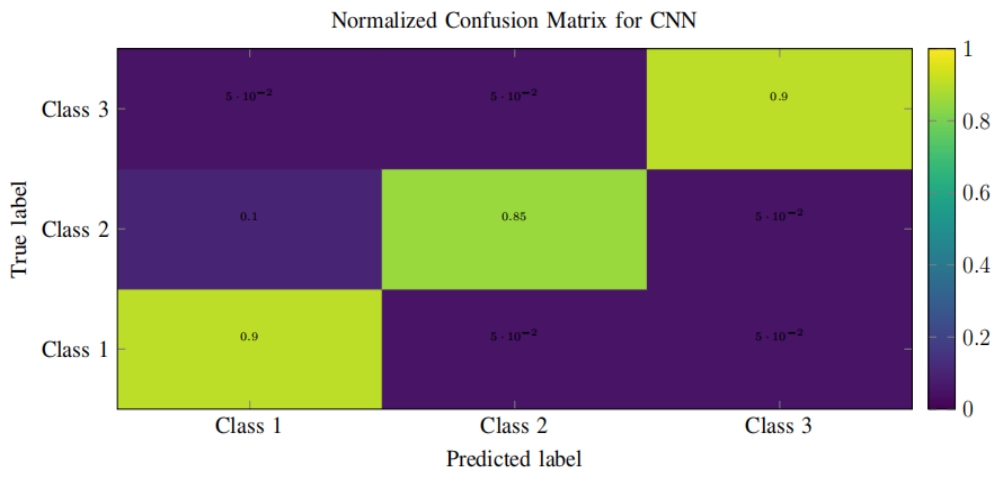
Asia Pacific Academy of Science Pte. Ltd. (APACSCI) specializes in international journal publishing. APACSCI adopts the open access publishing model and provides an important communication bridge for academic groups whose interest fields include engineering, technology, medicine, computer, mathematics, agriculture and forestry, and environment.



Bridging deep segmentation and metaverse visualization: Cellpose-based 3D brain tumor reconstruction from MRI
Vol 6, Issue 3, 2025
Download PDF
Abstract
Accurate and efficient brain tumor segmentation is critical for diagnosis, treatment planning, and outcome monitoring in neuro-oncology. This study presents an integrated framework that combines deep learning-based tumor segmentation with 3D spatial reconstruction and metaverse-aligned visualization. The Cellpose segmentation model, known for its shape-aware adaptability, was applied to grayscale T1-weighted MRI slices to generate binary tumor masks. These 2D masks were reconstructed into 3D surface meshes using the marching cubes algorithm, enabling the computation of clinically relevant spatial parameters including centroid, surface area, bounding box dimensions, and mesh extents. The resulting tumor models were embedded into a global coordinate system and visualized across orthogonal planes, simulating extended reality (XR) environments for immersive anatomical exploration. Quantitative evaluation using DICE, Intersection over Union (IoU), and Positive Predictive Value (PPV) validated the segmentation accuracy, with DICE scores exceeding 0.85 in selected cases. The reconstructed tumors exhibited surface areas ranging from ~45,000 to ~74,000 voxel² units and extended across more than 200 units along the Y and Z axes. Although volumetric values were not computed due to open mesh geometry, the spatial profiles provided a reliable foundation for integration into metaverse platforms. This pipeline offers a lightweight and scalable approach for bridging conventional 2D tumor imaging with immersive 3D applications, paving the way for advanced diagnostic, educational, and surgical planning tools.
Keywords
References
1. R. L. Siegel, K. D. Miller, A. Jemal. Cancer statistics, 2023, CA: A Cancer Journal for Clinicians, vol. 73, no. 1, pp. 17–48, 2023. doi: 10.3322/caac.21763.
2. S. Agarwal, A. K. Dohare, P. Saxena,et al. “HDL ACO: Hybrid deep learning and ant colony optimization for ocular optical coherence tomography image classification,” Scientific Reports, vol. 15, p. 5888, Feb. 18, 2025. doi: 10.1038/s41598-025-89961-7.
3. O. Ronneberger, P. Fischer, T. Brox. “U-Net: Convolutional networks for biomedical image segmentation,” in Proc. MICCAI, 2015, pp. 234–241.
4. O. Oktay, J. Schlemper, L. Le Folgoc, et al. “Attention U-Net: Learning where to look for the pancreas,” arXiv preprint, arXiv:1804.03999, 2018.
5. F. Milletari, N. Navab, S. Ahmadi. “V-Net: Fully convolutional neural networks for volumetric medical image segmentation,” in Proc. 3DV, 2016, pp. 565–571.
6. T. Stringer, M. Michaelos, M. Pachitariu. “Cellpose: A generalist algorithm for cellular segmentation,” Nature Methods, vol. 18, pp. 100–106, 2021.
7. W. E. Lorensen, H. E. Cline. “Marching cubes: A high-resolution 3D surface construction algorithm,” ACM SIGGRAPH Computer Graphics, vol. 21, no. 4, pp. 163–169, 1987.
8. B. Meskó, Z. Győrffy. “The role of artificial intelligence in precision medicine and the metaverse,” NPJ Digital Medicine, vol. 5, no. 1, p. 106, 2022.
9. C. Moro, Z. Štromberga, A. Raikos, et al. “The effectiveness of virtual and augmented reality in health sciences and medical anatomy,” Advances in Experimental Medicine and Biology, vol. 1138, pp. 69–76, 2021.
10. B. Amin, R. Sameh Samir, Y. Tarek, et al. “Brain tumor multi classification and segmentation in MRI images using deep learning,” arXiv preprint, arXiv:2304.10039, Apr. 20, 2023. Available: https://arxiv.org/abs/2304.10039.
11. X. Zhang, N. Ou, C. Liu, et al. “Unsupervised brain tumor segmentation with image-based prompts,” arXiv preprint, arXiv:2304.01472, Apr. 4, 2023. Available: https://arxiv.org/abs/2304.01472.
12. T. Ren, E. Honey, H. Rebala, et al. “An optimization framework for processing and transfer learning for the brain tumor segmentation,” arXiv preprint, arXiv:2402.07008, Feb. 10, 2024. doi: https://doi.org/10.48550/arXiv.2402.07008.
13. P. Saxena, S. K. Aggarwal, A. Sinha, et al. “Review of computer assisted diagnosis model to classify follicular lymphoma histology,” Cell Biochemistry & Function, vol. 42, no. 5, e4088, 2024. doi: 10.1002/cbf.4088.
14. A. Hatamizadeh, Y. Tang, D. Yang, et al. “Swin UNETR: Swin transformers for semantic segmentation of brain tumors in MRI images,” arXiv preprint, arXiv:2201.01266, Jan. 2022. Available: https://arxiv.org/abs/2201.01266.
15. M. Weber, D. Wild, J. Egger. “Studierfenster: An open science cloud based medical imaging analysis platform,” Journal of Digital Imaging, vol. 35, no. 1, pp. 1–10, Jan. 2022.
16. S. Pieper, M. Halle, R. Kikinis. “3D Slicer,” in Proc. 1st IEEE Int. Symp. Biomed. Imaging: Nano to Macro, 2004, pp. 632–635.
17. R. Chengoden, S. Sankar, M. J. Shankar, et al. “Metaverse for healthcare: A survey on potential applications, challenges and future directions,” arXiv preprint, arXiv:2209.04160, Sep. 2022. Available: https://arxiv.org/abs/2209.04160.
18. P. Saxena, R. Gupta, A. Goel, et al. “Automated Cellular Segmentation in Histopathology: A Multi-Step Mask Prediction Approach for Enhanced Analysis,” 2025 7th International Conference on Signal Processing, Computing and Control (ISPCC), SOLAN, India, 2025, pp. 437-442, doi: 10.1109/ISPCC66872.2025.11039568.
19. F. M. Al-Oqla, N. Nawafleh. “Artificial intelligence and machine learning for additive manufacturing composites toward enriching Metaverse technology,” Metaverse, vol. 5, no. 2, p. 2785, 2024. doi: 10.54517/m.v5i2.2785.
20. L. Zhang. “Editorial: Navigating the convergence of AI and the Metaverse,” Metaverse, vol. 5, no. 2, p. 3219, 2024. doi: 10.54517/m.v5i2.3219.
21. C. O. Yun, T. S. Yun. “Expanding metaverse market: New opportunities and challenges for the content industry,” Metaverse, vol. 5, no. 2, p. 2920, 2024. doi: 10.54517/m.v5i2.2920.
22. N. Kenig, A. Muntaner Vives. “The role of humans in the future of medicine: Completing the cycle,” Metaverse, vol. 6, no. 1, p. 3129, 2025. doi: 10.54517/m.v5i2.m3129.
23. Z. Pan. “Top 10 application scenarios in Metaverse,” Metaverse, vol. 4, no. 1, p. 2202, 2023. doi: 10.54517/m.v4i1.2202.
24. S. Song, X. Chen, J. Liu, et al. “NestedFormer: Nested modality aware transformer for brain tumor segmentation,” Medical Image Analysis, vol. 87, p. 102819, 2023. doi: 10.1016/j.media.2023.102819.
25. J. Guo, K. Liu, B. Zhang, et al. “SegMamba: Long range sequential modeling Mamba for 3D medical image segmentation,” arXiv preprint, arXiv:2402.06738, 2024. Available: https://arxiv.org/abs/2402.06738.
26. Y. Zhao, Y. Wang, Z. Chen, et al. “Serp Mamba: Advancing high resolution retinal vessel segmentation with selective state space model,” arXiv preprint, arXiv:2402.10490, 2024. Available: https://arxiv.org/abs/2402.10490.
27. L. Deng, Y. Wang, Z. Yan, et al. “TP-DRSeg: Improving diabetic retinopathy lesion segmentation with explicit text prompts assisted SAM,” arXiv preprint, arXiv:2402.11312, 2024. Available: https://arxiv.org/abs/2402.11312.
28. P. Saxena, M. Sharma, R. Batra, et al. "XAI for Lymph Node Histopathology: From Explainability to Immersive Metaverse Applications," 2025 7th International Conference on Signal Processing, Computing and Control (ISPCC), SOLAN, India, 2025, pp. 304-309, doi: 10.1109/ISPCC66872.2025.11039319.
29. A. Hatamizadeh, Y. Tang, D. Yang, et al. “Medical open network for AI (MONAI),” arXiv preprint, arXiv:2012.05776, Dec. 2020. Available: https://arxiv.org/abs/2012.05776.
30. T. Huynh-The, Q. V. Pham, X. Q. Pham, et al. “Artificial intelligence for the metaverse: A survey,” Engineering Applications of Artificial Intelligence, vol. 117, p. 105581, 2023. doi: 10.1016/j.engappai.2022.105581.
31. R. Chengoden, S. Sankar, M. J. Shankar, et al. “Metaverse for healthcare: A survey on potential applications, challenges and future directions,” Biomedical Signal Processing and Control, vol. 71, p. 103174, 2022. doi: 10.1016/j.bspc.2021.103174.
32. J. Wang. “Application of Brain–Computer Interface Technology in the Metaverse: Challenges and Future Directions,” Journal of Intelligent & Fuzzy Systems, vol. 45, no. 4, pp. 4959–4967, 2023. doi: 10.3233/JIFS-230242.
33. A. Drigas, E. Sideraki. “Neuroplasticity and Cognitive Enhancement in Virtual Reality Environments: A Road to the Metaverse,” International Journal of Online and Biomedical Engineering (iJOE), vol. 20, no. 1, pp. 4–16, 2024. doi: 10.3991/ijoe.v20i01.40479.
Supporting Agencies
Copyright (c) 2025 Pranshu Saxena, Aatif Jamshed, Sanjay Kumar Singh, Sandeep Saxena, Sahil Kumar Aggarwal

This work is licensed under a Creative Commons Attribution 4.0 International License.

This site is licensed under a Creative Commons Attribution 4.0 International License (CC BY 4.0).

Prof. Zhigeng Pan
Professor, Hangzhou International Innovation Institute (H3I), Beihang University, China

Prof. Jianrong Tan
Academician, Chinese Academy of Engineering, China
Conference Time
December 15-18, 2025
Conference Venue
Hong Kong Convention and Exhibition Center (HKCEC)
...
Metaverse Scientist Forum No.3 was successfully held on April 22, 2025, from 19:00 to 20:30 (Beijing Time)...
We received the Scopus notification on April 19th, confirming that the journal has been successfully indexed by Scopus...
We are pleased to announce that we have updated the requirements for manuscript figures in the submission guidelines. Manuscripts submitted after April 15, 2025 are required to strictly adhere to the change. These updates are aimed at ensuring the highest quality of visual content in our publications and enhancing the overall readability and impact of your research. For more details, please find it in sumissions...






.jpg)
.jpg)

